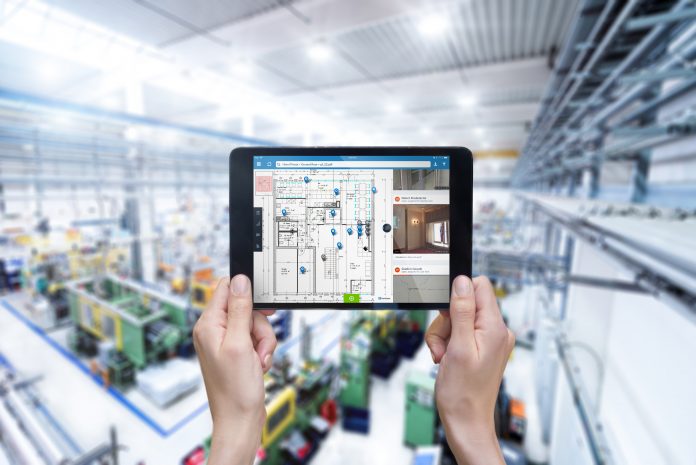What is the circular economy and how can it help construction? Sander van de Rijdt of PlanRadar examines the case for improving the industry’s sustainability – and the role BIM has to play
The Circular Economy is a new model that approaches the way we design things with the intention to reuse, recycle and reduce as many resources as possible. The idea is that by encouraging all major key players to choose not only greener alternatives but higher quality materials that can be reused in later projects, the construction industry can become a more sustainable built environment.
In the face of increasing environmental challenges for the sector, the need to produce long-term sustainability can benefit everyone involved in the industry including clients, engineers, contractors and architects. This is because the purpose of circular construction is to not only increase sustainability, which is perceived by many in the industry as a cost increase, but to add value to projects and therefore incentivise the uptake of circular principles.
The need for the industry to address the issue is clear. Nearly 50% of the world’s waste is produced by the construction sector. Material extraction will triple in the next 30 years and waste production will do the same by 2100. In the UK, the construction sector is responsible for around 60% of all UK materials used and produces about a third of all its waste.
Yet the cost increases associated with more sustainable approaches have often been difficult for construction to absorb during a period of tight margins and an increasing number of external challenges.
By introducing principles of the circular economy in the design phase with a focus on longevity, the lifecycle of a building extends beyond its operational phase and the lifecycle of every material is extended even after the building is decommissioned. While operational, buildings will operate increasingly like banks, storing valuable assets that can later restore value into the supply chain.
Mind the circularity gap
According to the Circularity Gap Report for 2019, only 9% of the world is circular and carbon emissions and material use have consistently maintained an upward trend. Autodesk predicts that construction will need to globally build an average of 13,000 new buildings every day until 2050, with most of the work focused in China and in developing nations.
Given the industry produces over half the world’s waste, while also requiring at least two-fifths of the world’s materials and energy, circularity will become increasingly necessary for the sector to meet the demands of the world’s economies.
The shift from a linear economic model, one that has been deeply embedded into all parts of our society, to a circular model will focus on a long-term strategy to minimise the impact on the environment, but also to support economic growth. By maximising resource value by keeping products, materials and components in use for as long as possible, circular construction can begin to build towards a zero-waste supply chain by upcycling and recycling the existing waste.
A key strategy gap, however, must be bridged. The need for collaboration across the value chain is essential. One issue is those strengthening competencies, resources and ideas may not be the ones to immediately feel the benefits and may incur most of the costs. Waste can become a valuable resource, as the materials used in buildings become designed to be reused, but it occurs later in the supply chain where other companies may be the ones to benefit from cheaper access to materials or a more adaptable building. However, the likelihood that the demand for new approaches that seek to redesign, rethink and most importantly reuse waste can also provide an economic stimulus to those in the design part of the chain.
By focusing on resource efficiency and sustainable construction, the entire built environment can significantly reduce the amount of waste it generates, reduce greenhouse gas emissions and increase margins throughout the sector.
What else can circular construction solve?
Circular construction can resolve several issues including preventing a shortage of resources, unstable prices and developing more efficient methods of building. What will appeal to decision-makers in construction, though, will be the incentives. There is not just an ecological benefit but also a business case to be made.
Between 2017 and 2018, the average prices of construction materials in the UK rose by 4.9%. Adopting circular economy principles could therefore represent a €1.8trn opportunity for the EU between 2015 and 2030. Given construction is a high-value industry that inherently has an element of risk, the upfront costs of introducing a more circular approach represent a barrier that may need economic stimulus to overcome.
There are reasons this should appeal to governments to do so. While some talk is devoted to the possibility of deconstructing buildings and moving them elsewhere, the main purpose of circular construction is to maintain healthy buildings over the course of a long period of time with as few materials as possible. It will be most effective when it is applied to replacing materials and buildings that are designed with a short life span in mind. A building that must be reconstructed several times over the course of a century to accommodate the changing needs of its occupants will inevitably use far more materials and take extra time than one that was designed to be adaptable in the first place.
To achieve this, the principles of longevity, quality and adaptability need to be installed in a building from its design. Better quality materials require lower maintenance and this in turn can facilitate upgrading or refurbishing them with as few natural resources as possible. This means an initial larger outlay. Yet, if a building goes from a commercial space to a residential one, to then return to a commercial one over the course of a few decades, there are huge savings that can be made across the building’s lifecycle. Solutions to overcome the initial costs can be turned into huge savings, not just to constructors but to the various end-users of a building throughout its lifespan. This will require pragmatic financing and a small leap of faith for construction companies and architects, but governments can play an important role in being the guiding hand.
BIM
A technology that will make circular construction possible, and indeed more likely, is building information modelling, better known as BIM. The technology that allows a digital representation of a built facility can produce accurate building models and allow different crews to understand the design of a building.
Along with digital documentation and communication software, it can therefore assist construction and demolition contractors by providing an accurate bill of materials so that they are aware of where the valuable components are during deconstruction, and therefore, which materials are being used in the circular process.
It can also allow companies to engage with the adaptability of the building they are modifying and understand better where time and money can be saved in the redesign.
In the maintenance phase, BIM can assist workers with issues like when a boiler is due to be replaced, allowing for many project teams to benefit from a better understanding of the longevity of the building.
Can it work?
The challenges we face as an industry to become more sustainable, use resources efficiently and protect industrial growth are critical. Governments recognise this and are increasingly prioritising these issues in policy.
Waste management and materials used are central to sustainability and to costs in the sector. What is now clear is a more circular approach can significantly improve the amount of recycling and reusing of resources in the industry, while reducing the amount of waste that leaves it. By focusing on designing a smarter build process with technological and innovative solutions at its core, the transition to a more sustainable and circular approach can prove to be cost effective in the long run. With that central vision shared across the industry, we can reshape our environment for future generations.
Sander van de Rijdt is co-founder and managing director of PlanRadar, a web-based SaaS (Software as a Service) solution for documentation and communication in construction and real estate projects.
Sander van de Rijdt
Managing director
PlanRadar
+44 (0)20 396 629 06














